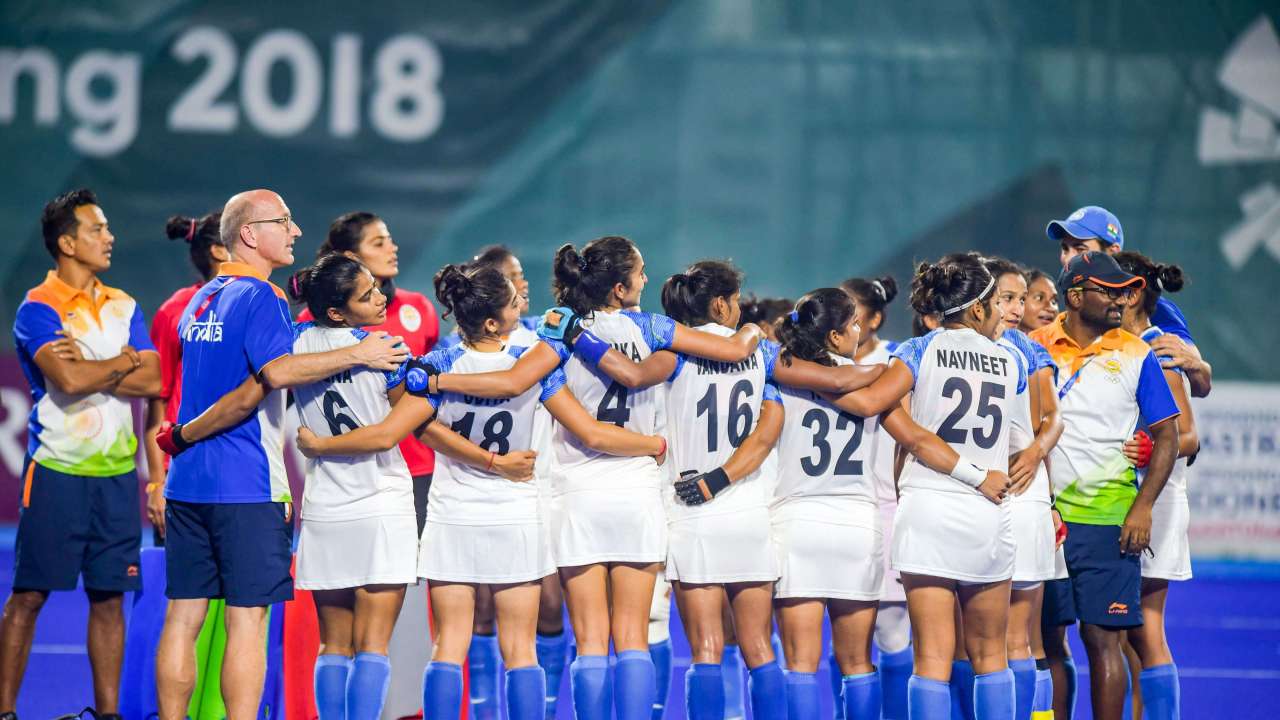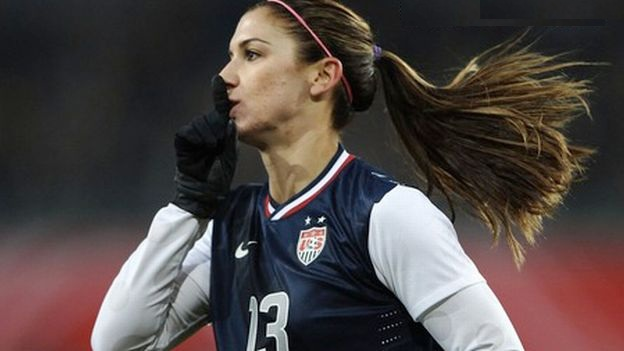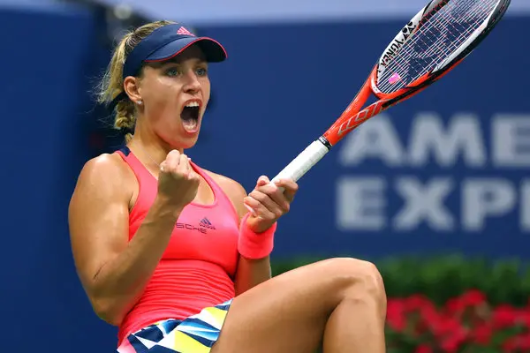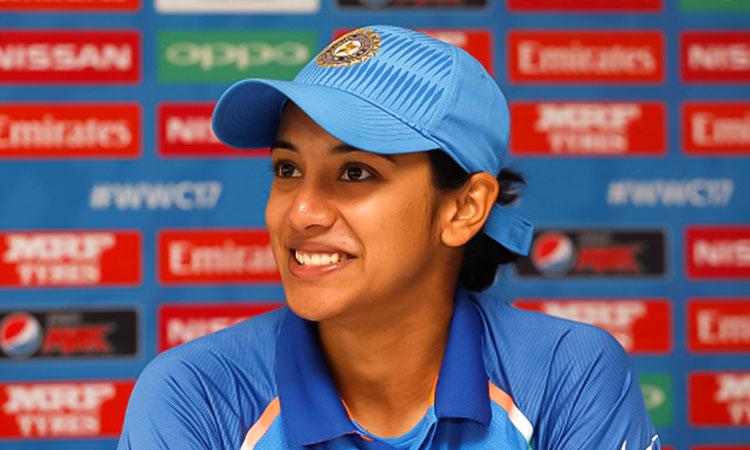Begin typing your search above and press return to search.
Featured
We encourage women but have failed to eliminate wage gap in sports

Sports have come a long way in recent years to bridge the pay gap between male and female players. But several sports have much more work to do than others, which show some glaring difference in numbers. Recent research by Pay-As-You-Go energy provider reveals a significant gender pay gap across some professional sports. The research is based upon the annual earnings of top male and female athletes from three major sports: football, basketball, and tennis. Eliminating the premise of sponsorship and endorsements, the research delves in the number of minutes each player had spent 'competitively participating in their sport', furnishing an "earnings per minute" figure. By comparing Lionel Messi with Alex Morgan's earnings it has been found the rate at which they are rewarded for their excellence is highly contrasting.  Alex Morgan FIFA's latest annual report highlights the glaring disparity between men and women’s football. During the last summer’s World Cup, France banked $38 million from FIFA for winning the championship, but the women’s champions this July will earn just $4 million. The Boost report goes on to highlight the US' biggest sports, basketball, and the picture is very similar. In the men's elite basketball league, the National Basketball League (NBA), the average salary is a whopping £5.49 million. Including regular season and the play-offs, players earn that salary at £1,396 per minute. For the Women's NBA (WNBA), the average salary of £57,490 would be earned at £35.23 per minute– just 2.5% of the men's figure. Stephen Curry, the NBA's highest-paid player in 2017, earned his £26.6 million salaries at £12,190 a minute. Candace Parker, one of the most successful female basketball players, earned £68.19 for every minute she spent on the court—some 179 times less. In the sports highlighted above, there is an imbalance between the rate at which the very best male and female athletes are rewarded. The achievements of male players in these sports are no greater than that of females, but given their financial rewards, the industry aligns itself as if they are. The sports mentioned above could learn a few things from tennis. A sport that churns out equal prize money in all four of its major championships, tennis seemingly does more in its most prestigious tournaments than any other sport to elevate the achievements of their top female athletes. In tennis, women edge ahead in terms of earnings per minute because women’s matches are generally shorter.
Alex Morgan FIFA's latest annual report highlights the glaring disparity between men and women’s football. During the last summer’s World Cup, France banked $38 million from FIFA for winning the championship, but the women’s champions this July will earn just $4 million. The Boost report goes on to highlight the US' biggest sports, basketball, and the picture is very similar. In the men's elite basketball league, the National Basketball League (NBA), the average salary is a whopping £5.49 million. Including regular season and the play-offs, players earn that salary at £1,396 per minute. For the Women's NBA (WNBA), the average salary of £57,490 would be earned at £35.23 per minute– just 2.5% of the men's figure. Stephen Curry, the NBA's highest-paid player in 2017, earned his £26.6 million salaries at £12,190 a minute. Candace Parker, one of the most successful female basketball players, earned £68.19 for every minute she spent on the court—some 179 times less. In the sports highlighted above, there is an imbalance between the rate at which the very best male and female athletes are rewarded. The achievements of male players in these sports are no greater than that of females, but given their financial rewards, the industry aligns itself as if they are. The sports mentioned above could learn a few things from tennis. A sport that churns out equal prize money in all four of its major championships, tennis seemingly does more in its most prestigious tournaments than any other sport to elevate the achievements of their top female athletes. In tennis, women edge ahead in terms of earnings per minute because women’s matches are generally shorter.  Angelique Kerber At the 2018 Wimbledon Championships, female winner Angelique Kerber (£4,311.14) earned 81 per cent more per minute than male winner Novak Djokovic (£2,374.54) However, below the Grandslam level, the gender pay disparity in tennis remains. Between the four major tournaments, many comparable events for men and women still offer significantly different financial rewards. Once personal endorsements are added then the gap becomes even more substantial– Roger Federer's endorsements for 2018 are reported to be $65 million while, Serena Williams's are listed as $18 million. In Forbes list of highest-paid athletes of 2018—despite eight of the top ten highest-paid female athletes being from the sport of tennis—there is not one single female in the top 100.
Angelique Kerber At the 2018 Wimbledon Championships, female winner Angelique Kerber (£4,311.14) earned 81 per cent more per minute than male winner Novak Djokovic (£2,374.54) However, below the Grandslam level, the gender pay disparity in tennis remains. Between the four major tournaments, many comparable events for men and women still offer significantly different financial rewards. Once personal endorsements are added then the gap becomes even more substantial– Roger Federer's endorsements for 2018 are reported to be $65 million while, Serena Williams's are listed as $18 million. In Forbes list of highest-paid athletes of 2018—despite eight of the top ten highest-paid female athletes being from the sport of tennis—there is not one single female in the top 100.  Smriti Mandhana The disparities of wage can be considered as reflections of the popularity of men's and women's sports. Higher audiences attract more advertisers and investment, however, improved coverage and marketing of women's sport should be the priority coming to addressing this problem. These figures testify the fact that there's still a long way to go before equality is reached.
Smriti Mandhana The disparities of wage can be considered as reflections of the popularity of men's and women's sports. Higher audiences attract more advertisers and investment, however, improved coverage and marketing of women's sport should be the priority coming to addressing this problem. These figures testify the fact that there's still a long way to go before equality is reached.
Premier League players would earn £772 per minute if they were to play every minute of a regular season (based on the average wage of the league). Doing the same calculation of the FA Women's Super League, the result is just £16.72.In 2017-18, Messi's basic salary was £64.5 million spread across 4,289 minutes of league and cup action. to simplify things, he earned £15,048 for every minute he stayed on the field. Alex Morgan, one of the most gifted footballers of this generation and reportedly the top-paid female footballer worldwide, made £495,000 salary at just £431 per minute in the 2017 season—35 times less. Furthermore, Brazil's Marta, who won FIFA's best female footballer of the year in 2018, earned almost 99 times less per minute than Messi at just £225.
 Alex Morgan FIFA's latest annual report highlights the glaring disparity between men and women’s football. During the last summer’s World Cup, France banked $38 million from FIFA for winning the championship, but the women’s champions this July will earn just $4 million. The Boost report goes on to highlight the US' biggest sports, basketball, and the picture is very similar. In the men's elite basketball league, the National Basketball League (NBA), the average salary is a whopping £5.49 million. Including regular season and the play-offs, players earn that salary at £1,396 per minute. For the Women's NBA (WNBA), the average salary of £57,490 would be earned at £35.23 per minute– just 2.5% of the men's figure. Stephen Curry, the NBA's highest-paid player in 2017, earned his £26.6 million salaries at £12,190 a minute. Candace Parker, one of the most successful female basketball players, earned £68.19 for every minute she spent on the court—some 179 times less. In the sports highlighted above, there is an imbalance between the rate at which the very best male and female athletes are rewarded. The achievements of male players in these sports are no greater than that of females, but given their financial rewards, the industry aligns itself as if they are. The sports mentioned above could learn a few things from tennis. A sport that churns out equal prize money in all four of its major championships, tennis seemingly does more in its most prestigious tournaments than any other sport to elevate the achievements of their top female athletes. In tennis, women edge ahead in terms of earnings per minute because women’s matches are generally shorter.
Alex Morgan FIFA's latest annual report highlights the glaring disparity between men and women’s football. During the last summer’s World Cup, France banked $38 million from FIFA for winning the championship, but the women’s champions this July will earn just $4 million. The Boost report goes on to highlight the US' biggest sports, basketball, and the picture is very similar. In the men's elite basketball league, the National Basketball League (NBA), the average salary is a whopping £5.49 million. Including regular season and the play-offs, players earn that salary at £1,396 per minute. For the Women's NBA (WNBA), the average salary of £57,490 would be earned at £35.23 per minute– just 2.5% of the men's figure. Stephen Curry, the NBA's highest-paid player in 2017, earned his £26.6 million salaries at £12,190 a minute. Candace Parker, one of the most successful female basketball players, earned £68.19 for every minute she spent on the court—some 179 times less. In the sports highlighted above, there is an imbalance between the rate at which the very best male and female athletes are rewarded. The achievements of male players in these sports are no greater than that of females, but given their financial rewards, the industry aligns itself as if they are. The sports mentioned above could learn a few things from tennis. A sport that churns out equal prize money in all four of its major championships, tennis seemingly does more in its most prestigious tournaments than any other sport to elevate the achievements of their top female athletes. In tennis, women edge ahead in terms of earnings per minute because women’s matches are generally shorter.  Angelique Kerber At the 2018 Wimbledon Championships, female winner Angelique Kerber (£4,311.14) earned 81 per cent more per minute than male winner Novak Djokovic (£2,374.54) However, below the Grandslam level, the gender pay disparity in tennis remains. Between the four major tournaments, many comparable events for men and women still offer significantly different financial rewards. Once personal endorsements are added then the gap becomes even more substantial– Roger Federer's endorsements for 2018 are reported to be $65 million while, Serena Williams's are listed as $18 million. In Forbes list of highest-paid athletes of 2018—despite eight of the top ten highest-paid female athletes being from the sport of tennis—there is not one single female in the top 100.
Angelique Kerber At the 2018 Wimbledon Championships, female winner Angelique Kerber (£4,311.14) earned 81 per cent more per minute than male winner Novak Djokovic (£2,374.54) However, below the Grandslam level, the gender pay disparity in tennis remains. Between the four major tournaments, many comparable events for men and women still offer significantly different financial rewards. Once personal endorsements are added then the gap becomes even more substantial– Roger Federer's endorsements for 2018 are reported to be $65 million while, Serena Williams's are listed as $18 million. In Forbes list of highest-paid athletes of 2018—despite eight of the top ten highest-paid female athletes being from the sport of tennis—there is not one single female in the top 100. The gender pay gap in the Indian context is also unsatisfactory.
With a 19 per cent overall pay gap between the genders across professions, according to Monster Salary Index, we might just be doing worse in sports. BCCI’s 2018 retainer contracts show the ladies’ annual contract amounts remain a shadow of the Men in Blue. If you compare the top Grade across genders, there is close to a 14-fold gap while the gulf in second grade is 10 times. There isn’t even a third tier of contracts for the women.‘A’ grade women cricketers (Rs.50 Lakh) receive half the pay of the ‘C’ grade lowest earning men cricketers (Rs.1 Crore). While the men’s team have been offered a salary of Rs. 7 Crore per annum for cricketers of the ‘A+’ grade or ‘top performers’, no such classification has been drawn for the women’s team.The women of the Indian Football team despite their current World ranking of 62 earns between five to ten Lakh rupees, while the men’s team draw around 70 Lakh per year. In the case of hockey, there are reports of a minimum 10-fold wage gap between the two genders’ salary in India.
 Smriti Mandhana The disparities of wage can be considered as reflections of the popularity of men's and women's sports. Higher audiences attract more advertisers and investment, however, improved coverage and marketing of women's sport should be the priority coming to addressing this problem. These figures testify the fact that there's still a long way to go before equality is reached.
Smriti Mandhana The disparities of wage can be considered as reflections of the popularity of men's and women's sports. Higher audiences attract more advertisers and investment, however, improved coverage and marketing of women's sport should be the priority coming to addressing this problem. These figures testify the fact that there's still a long way to go before equality is reached.Next Story






